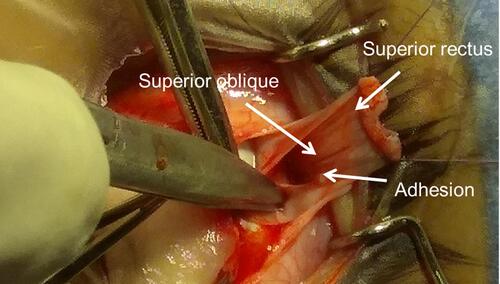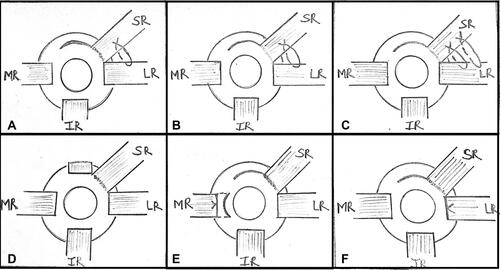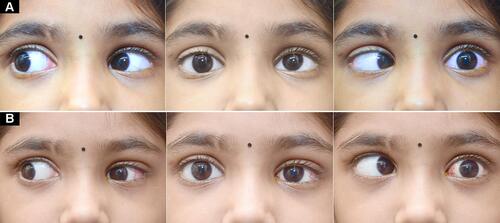Figures & data
Table 1 Indications and Contra-Indications for SRT in DRS
Table 2 Novel Grading Method for Retraction and Overshoot in DRS
Figure 1 Figure showing the role of meticulous dissection to separate the superior rectus muscle from the underlying superior oblique muscle. This helps to minimize the risk of induced post-operative vertical deviations and ptosis.

Table 3 Various Strategies for Augmenting the Superior Rectus Transposition (SRT)
Figure 2 Various approaches for augmenting the superior rectus transposition (SRT). (A) Posterior fixation suture. (B) Suture myopexy. (C) Multiple augmentation sutures. (D) Resection of the superior rectus before transposition. (E) Weakening of the medial rectus. (F) Resection of the lateral rectus.

Table 4 Table Outlining Results of Previous Studies Analysing Outcomes of SRT and MR Recession in Esotropic DRS
Figure 3 Surgical outcome of superior rectus transposition (SRT) in Duane retraction syndrome (DRS). (A) Pre-operative image showing primary position esotropia and −4 abduction limitation in the left eye in a case of esotropic Duane retraction syndrome. (B) Post-operative image showing improvement in both, primary position deviation and abduction limitation to −3 following SRT with medial rectus recession in the left eye.

Table 5 Table Summarizing Post-Operative Complications of SRT and Preventive and Management Strategies
